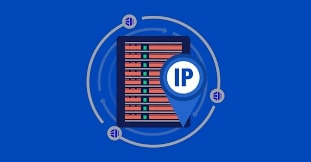At first glance, 185.63.2253.200 might look like a standard IPv4 address, but a closer look reveals something unusual. This address violates core technical rules of IP formatting, making it invalid on any network. Despite this, 185.63.2253.200 continues to appear in logs, scripts, and forums, often without explanation. Why does it show up, and what does it mean?
Let’s break it down and understand the significance behind 185.63.2253.200.
Why 185.63.2253.200 Is Not a Valid IPv4 Address
An IPv4 address is composed of four numeric segments separated by dots. Each segment, called an octet, must fall between 0 and 255. In the case of 185.63.2253.200, the third segment is 2253 — far beyond the allowed range.
This small numerical error instantly renders 185.63.2253.200 non-functional and unresolvable. If you try to ping or route it, the result will fail because no device can recognize or assign an IP segment higher than 255.
Where 185.63.2253.200 Commonly Appears
Even though 185.63.2253.200 is technically invalid, you might still see it in various places:
Code Samples and Dev Environments
Developers sometimes use impossible IPs like 185.63.2253.200 as placeholders during local testing. It helps indicate that the address is fictional and not tied to any real network.
Logging and Data Collection
Systems collecting data from external sources may accidentally capture malformed addresses. If user input isn’t sanitized, entries like 185.63.2253.200 might slip through and appear in logs.
Training Material and Demos
Invalid IPs such as 185.63.2253.200 are useful in tutorials that teach validation practices. They help illustrate what systems should reject and why.
Is There a Pattern to 185.63.2253.200 Being Used
There could be a reason this specific structure — 185.63.2253.200 — shows up. It begins with a legitimate range used by European or cloud-based services (185.63.x.x). That gives it the appearance of a real address, which may make it more likely to pass basic visual inspections.
Attackers or botnets might use 185.63.2253.200 and similar entries to test how a system reacts to malformed input. It’s one way to identify weak filtering or logging practices.
How Systems Should Handle 185.63.2253.200
If your application, form, or firewall encounters 185.63.2253.200, it should flag and reject it. Here’s how to do that effectively:
-
Validate all IP inputs using strict pattern checks
-
Ensure each octet is within the 0–255 range
-
Log rejected IPs like 185.63.2253.200 for auditing purposes
-
Block entries with out-of-range values during submission
Security-minded teams treat entries like 185.63.2253.200 as noise at best — and red flags at worst.
Could 185.63.2253.200 Be a Misconfiguration
Another reason for seeing 185.63.2253.200 could be a copy-paste error. Maybe someone intended to type 185.63.253.200 but added an extra digit. These mistakes can go unnoticed, especially in large datasets.
Typos involving IPs are more common than most expect. They can cause unnecessary connection issues, misrouted requests, or errors during server configuration. Catching invalid entries like 185.63.2253.200 early avoids downstream headaches.
Can You Convert 185.63.2253.200 Into a Valid Format
The short answer is no. There’s no valid conversion for 185.63.2253.200 in IPv4. The only way it would make sense is if the third segment — 2253 — were corrected to a value below 256.
Even as an IPv6 address, 185.63.2253.200 is unusable, since IPv6 doesn’t use four-dot-decimal notation. There’s no format where this string is technically accepted without changes.
Why 185.63.2253.200 Still Matters
Though it’s invalid, 185.63.2253.200 plays a valuable role in helping us test systems, understand validation limits, and detect poor input handling. Its persistence in code and logs acts as a reminder — even something small and technically incorrect can reveal larger problems in software architecture.
Seeing 185.63.2253.200 in your systems should trigger curiosity, not panic. Use it as a prompt to strengthen your input validation and logging pipelines.
Conclusion – The Silent Value of 185.63.2253.200
On the surface, 185.63.2253.200 looks like a regular IP. But in truth, it’s invalid by design — a harmless-looking string that teaches critical lessons about attention to detail. Whether it appears in your logs by accident or design, 185.63.2253.200 should be seen as an opportunity to tighten controls, validate inputs, and reinforce best practices.
In the complex world of networking and cybersecurity, even an IP like 185.63.2253.200 can be a valuable teacher.
